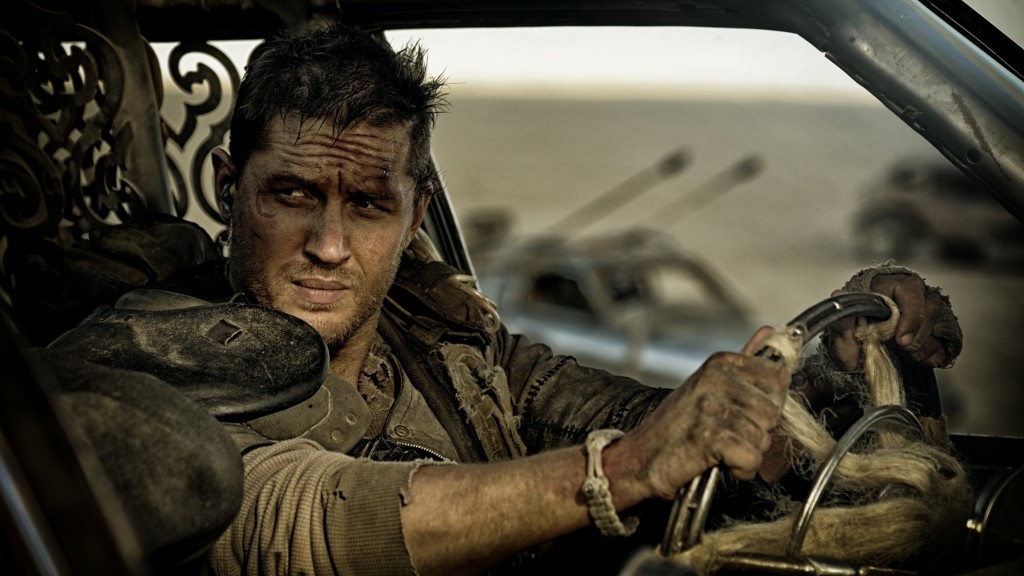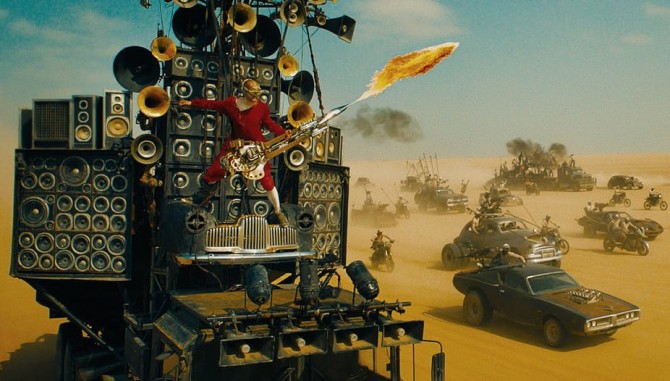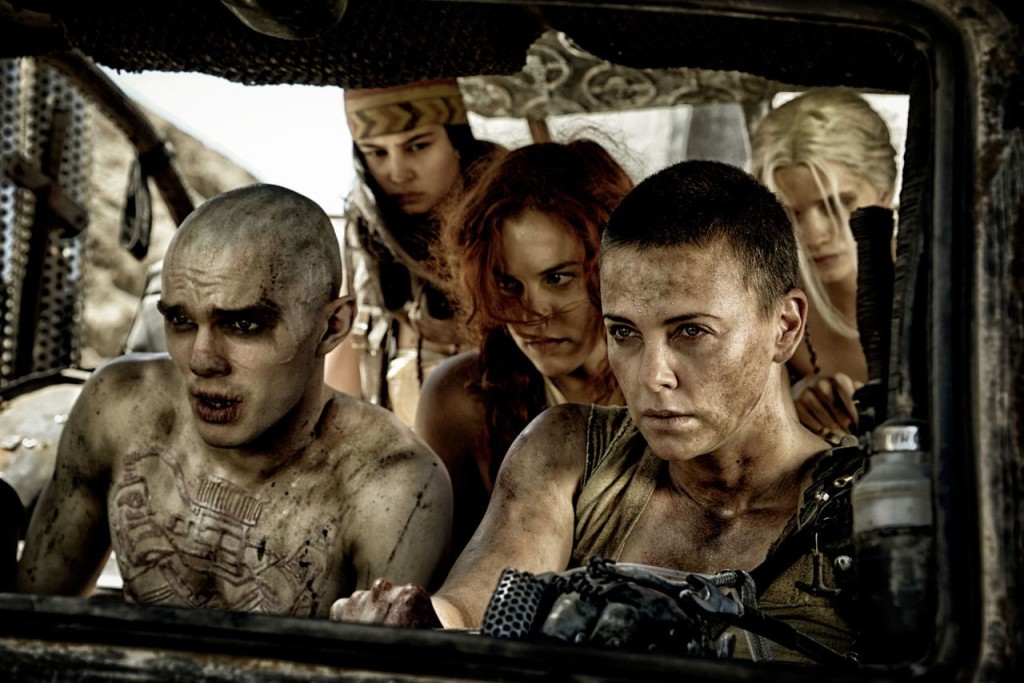We’re keeping it going with Sci-Fi Showdown inspired Thursday articles. Remember, the Sci-Fi Showdown deadline is Thursday, September 16th. You can learn more about it here. It’s absolutely free. So get those sci-fi scripts finished and get them in on time. Let’s make a f%$#ing great science-fiction movie together!
One thing I want to point out before I get to today’s tips. A lot of these tips deal with the chase aspect of the film. But these tips can work for ANY type of chase. A car chase. A foot chase. An across-the-galaxy chase. They can also work within chase sequences. So if your script just has one chase sequence, these tips can be applied to that as well. All right. Let’s get to it.
1) 99% of Sci-Fi Movies require voice overs or a title card at the beginning of the movie to explain what’s going on – If you don’t need a ton of explanation to set up your movie, use a title card. If you’ve got a lot to explain, use a voice over. Fury Road uses Max’s voice over. Star Wars uses title cards. I don’t care which you use but you probably need one. If we don’t know how your world operates, we’re going to have a tough time enjoying what’s happening.
2) Urgency and Sci-Fi go together like peanut butter and jelly – The most underrated reason for Star Wars’s success – and I’m talking the original Star Wars here – is its urgency. Urgency can camouflage all sorts of script problems due to the fact that the story’s moving so fast, the reader doesn’t have time to notice problems. Fury Road doesn’t just embrace urgency. It makes it the driving force behind the entire story. The bad guys are always right behind them. There’s never time to slow down.
3) If you’ve got two protagonists, don’t let your first act get bogged down setting those protagonists up – Fury Road has two heroes, Max and Furiosa. Had they written this script traditionally, they would’ve spent the first 30 pages of the script setting both Max and Furiosa up before we went on the journey. Director George Miller knew that’d be a dumb idea in a movie built around urgency. So he chose to set one character up before the chase (Max) and the other character up during it (Furiosa). Too much setup can lead to boredom which is why saving some character setup for the journey might be a good option.
4) Why limit yourself to two sources of conflict when you can have three? – With one hero, you get internal conflict (the battle against one’s self) and external conflict (the battle against the antagonist). With two heroes, you get those things along with a third element of conflict – inter-relational conflict (the conflict that occurs between the two main characters). Since a good argument can be made that the more conflict there is in your story, the better, consider allowing two heroes to lead your movie instead of one, like Fury Road.
5) Your sci-fi movie *must* have original ideas! – If you’re not bringing any original ideas into your science-fiction film, don’t bother writing it. Sci-fi is a genre where a heavy expectation is placed on creativity and imagination. That means you’re going to have to take some risks and make some non-traditional choices. In Mad Max Fury Road, there is zero reason for Immortan Joe to create a big crazy theatrical chase team that consists of fireworks and dudes playing electric guitars on an 80 mile per hour stage to chase Furiosa. In fact, it’d be a hell out of a lot smarter to jump in your fastest cars and chase Furiosa that way. Yet that is exactly what separates this movie from every other sci-fi movie, is the theatrical nature of the chase. What choices will you make that set your sci-fi script apart?
6) In chase movies, you want to put your character in a lot of a situations where going forward is HARDER than surrendering – Too many screenwriters treat their on-the-run protagonists like little children that need to be coddled and helped. That’s the opposite of how you should treat your protagonists. You want to place your protagonists in situations where surrendering to the bad guys is the better choice. They famously did this in Empire Strikes Back when Han Solo decides to fly into a mine field to escape Darth Vadar, despite the fact that there was an infinitely higher chance he would die in the mine field. Same thing here. Furiosa sees the mother of all sandstorms ahead of her. Surrendering would be the better choice in this situation. Which is why we get so excited when she chooses to keep going.
7) Silent Characters work much better on screen than they do on the page – Mad Max in Fury Road, much like Mad Max in the original Road Warrior, doesn’t say a whole lot. While this can work great onscreen with a strong actor and strong director, it’s something I’d be wary about doing in a spec script. Unless your silent hero is EXTREMELY ACTIVE and always charging forward making bold choice after bold choice, he’ll likely disappear on the page. I’ve read lots of scripts with quiet protags and, I can promise you, those characters rarely make an impact. The difference with something like Fury Road is that the director is writing the script. So he doesn’t have to worry about any characters not working on the page as long as they work onscreen.
8) Fast movies need quick flashbacks – For the 217,000th time, don’t use flashbacks to begin with. But if you do, use them sparingly and with purpose (they must be necessary, not exposition-dumps). In action movies, you can use flashbacks, but do so in the spirit of the genre and be quick about it. Max has this backstory where he got a girl he was protecting killed. We get a good dozen flashbacks of this throughout the movie, but they’re very quick – 2 seconds or less. All that matters with backstories is that we understand them. So if we can understand them in 2 seconds, you’ve done your job.
9) – Mythology tends to work best when it operates in the background, not when you shine a big light on it and say, “Look at what I did.” – Science-fiction writers tend to love their mythology (the inner workings of their fictional world) so much that they constantly halt the movie so that their characters can talk about or exhibit aspects of that mythology (see Matrix: Reloaded). What’s so great about Mad Max Fury Road is that most of the mythology is background noise. There are these pale soldiers. They seem to have some sort of blood disease. They have their own language, their own chants. There’s a specific moment, during an intense part of the chase, where one of them sprays some crazy drug-foil all over his face, he screams out a well-known chant to the others, before leaping onto the enemy car with explosives, destroying it. There were so many little moments like that that only the pale soldiers understood – and Miller never stopped to explain all of it. It was always happening in the background.
10) Someone in your movie’s got to arc, dammit – Some serious directors and writers consider character arcs unrealistic. I just brought this up last week with Quentin Tarantino. You can see that in Fury Road in that both Max and Furiosa do not change. They do not arc. But you’ll also notice that Nux (the “War Kid” who originally would do anything for Immortan Joe) ultimately relinquishes his allegiance to him to help the rebel crew. Audiences like at least one character in a movie to go through some level of change. If you’re worried about a character flaw that would feel dumb or false for your heroes, know that you can use other characters in your movie to explore an arc as well.
Bonus Tip! – A great climactic set piece is all about making it look like there’s no way your heroes will win – It should never EVER feel like your heroes are doing well in a climax. You want the opposite to happen. Keep stacking the odds against them. Fury Road is a great example of this. When the protagonists are forced to go back through the bad guys to get away, there isn’t a single moment in that sequence where we think our heroes have a leg up on the bad guys. There are an endless amount of cars. As soon as one is taken out, another one takes its place. The bad guys are able to snag one of the girls. Max, on top of the truck, is barely holding off bad guy after bad guy. We feel positive that our heroes will fail. Which is exactly how you want it to be.
Dude, what are you doing!? You’re sending your script out without getting professional feedback first? You’re NOT getting help from someone who can tell you EXACTLY what’s missing and how to fix it? Why?? You only get one shot with these industry contacts. Don’t screw it up by sending them the 10,000th average screenplay they’ve read this year! I do consultations on everything from loglines ($25) to treatments ($100) to pilots ($399) to features ($499). E-mail me at carsonreeves1@gmail.com if you’re interested. Use code phrase ‘WARM IN JULY’ and I’ll take a hundred bucks off a pilot or feature consultation. Chat soon!




